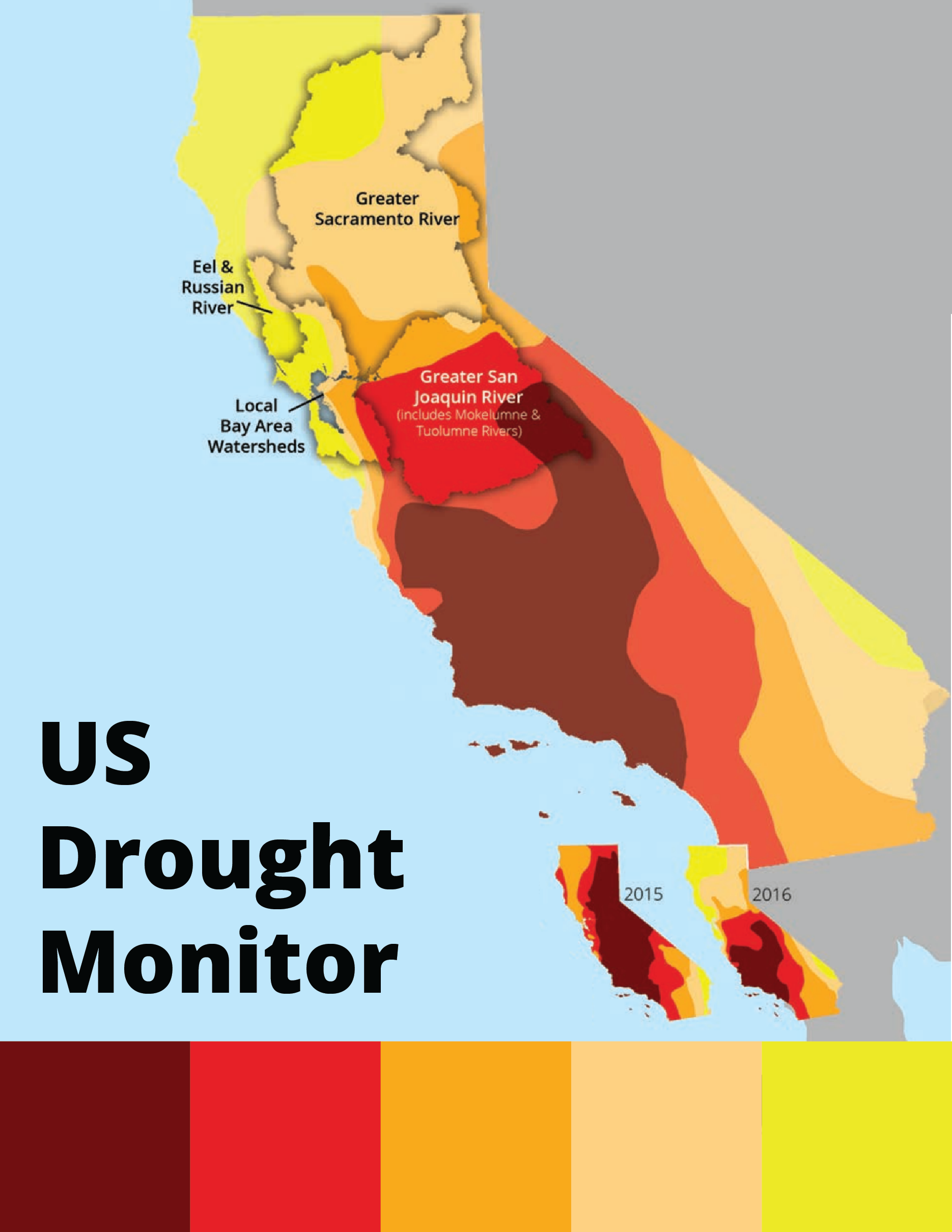
Drought
Drought is a regional risk in the Bay Area, with increasing impacts in a warming world. The following mapping tools document regional risk historically, while additional resources explore the challenges presented by acute and prolonged water shortages.
Drought: Risks and Resources
Drought is a regional hazard in the Bay Area, likely to increase in severity with climate change. Drought is a gradual phenomenon that occurs over several dry years, depleting reservoirs and groundwater basins without the expected annual recharge from winter precipitation. In the Bay Area, drought can cause:
- Reduced water supply for urban, agriculture, and environmental uses.
- Increased wildfire hazard, including more fire starts and more prolonged conflagrations fueled by excessively dry vegetation.
- Subsidence due to a lowering water table.
Major droughts have occured at frequent intervals over the past 60 years, some droughts resulting in State disaster declarations, and resulting in billions of dollars in crop losses and other damages. Climate change is likely to increase the severity of future droughts.
As the lead agency for regional planning in the Bay Area, ABAG and MTC are deeply interested in how our local water purveyors are working to reach reduced demand levels; the planning underway by the water districts for multi-year drought; and what planning may be underway or contemplated for a major drought disaster.
For additional information about drought and public policy in California, visit the Water Policy Center – Public Policy Institute of California.
United States Drought Monitor

A weekly update of current drought intensity, scaled from No drought to Exceptional Drought. This data set provides historical perspective on past droughts for the region and documents regional droughts of significant duration and intensity. Downloadable data set *coming soon.* Launch the Drought Monitor.

